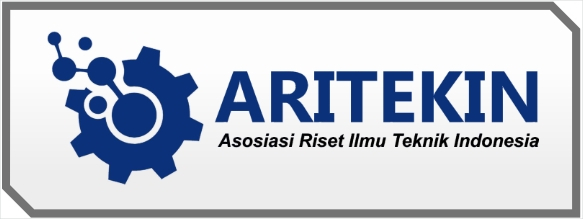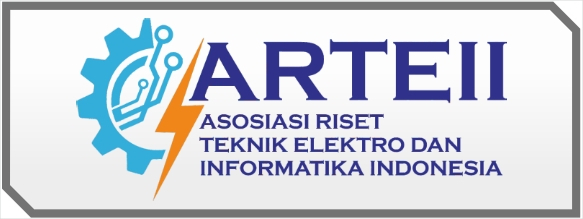Monitoring Air Limbah Rumah Sakit Berdasarkan Kadar pH Dan Suhu Menggunakan Arduino
DOI:
https://doi.org/10.55606/sinov.v5i1.573Keywords:
Monitoring, Processing, pH levels, WasteAbstract
Healthcare facilities such as hospitals produce significant amounts of waste from operational and supportive activities. Proper treatment of hospital waste is crucial to prevent negative environmental impacts. Hospital waste and sewage refer to the waste and sewage generated during hospital operations and related activities. Wastewater treatment plants (WWTP) are used to treat liquid waste in hospitals. Currently, wastewater treatment monitoring is conducted manually, posing a threat to the authorities. Wastewater samples are required to be sent to the laboratory that prolongs the duration of results for monitoring wastewater treatment. Inspired by the issue of hospital waste treatment, a monitoring tool for hospital waste treatment is designed employing Arduino, a water pH sensor, and a temperature sensor to diminish the impact of hospital waste. This tool would facilitate the officers in sending samples to the laboratory. The designed tool allows the officers to monitor the hospital wastewater treatment plant's status without the need to visit the plant physically. Water treatment plant monitoring using IoT technology involves the use of a pH sensor, a ds18b20 temperature sensor, and an ultrasonic proximity sensor. This monitoring tool is expected to be used safely to monitor water treatment plants..
Downloads
References
Andrianto, Heri. 2015. Pemograman Mikrokontroler AVR ATmega16 Menggunakan Bahasa C (CodeVisionAVR), Bandung: Informatika Bandung.
Arafat, M. K. (2016). Sistem Pengamanan Pintu Rumah Berbasis Internet Of Things ( IoT ) Dengan ESP8266. Jurnal Ilmiah Fakultas Teknik “Technologia,” 7(4), 262–268
Borg, Gall. 1989, Educational Research, Pinancing, New York.
D. Nataliana, N. Taryana, and E. Riandita, “Alat Monitoring Infus Set pada Pasien Rawat Inap Berbasis Mikrokontroler ATmega 8535,” ELKOMIKA J. Tek. Energi Elektr. Tek. Telekomun. Tek. Elektron., vol. 4, no. 1, p. 1, 2018.
HAFIIDHUDIN, (2018) “Prototipe Sistem Otomatisasi Instalasi Pengolahan Air Limbah (Ipal) Dan Monitoring Secara Realtime Berbasis Mikrokontroler”, Jurnal Online Mahasiswa (JOM) Bidang Teknik Elektro, Vol 1. 1 2018, pp. 1-13.
Ihsanto, Eko dan Hidayat, Sadri. 2014. Rancang Bangun Sistem Pengukuran Ph Meter Dengan Menggunakan Mikrokontroller Arduino Uno.Vol:5. No:3. Hal:131.
Maulidah Nur R., Ivonne Fresha A., Rizky Dian A. (2020) Aplikasi Sensor Ultrasonik HC-SR04 Guna Mendeteksi Jarak Penumpang Kereta Api di Era New Normal, Vol 1. 1 2020, pp. 236-240.
Muhajir Panji Ansyori, Joseph Dedy Irawan, Deddy Rudhistiar (2021) Monitoring Kolam Ikan Menggunakan Arduino Robotdyn Sebagai Mini Web Server, 5(2), pp. 557-564. https://doi.org/10.36040/jati.v5i2.3763
Nadi, M.R.G, Ruskandi. C, dan Pamungkas, R.S. 2019. Desain Sistem Deteksi Kualitas Air Berbasi Multi Sensor Ph, Dissolved Oxygen, Suhu Dan Konduktivitas. Vol:5. No:1. Hal:49
Susanto, B.I, Hardiansyah, Siregar. P, dan Pardede, S.O. 2012. Air Bagi Kesehatan.Jakarta: Central Comunications.
Yolarita, E. and Kusuma, D. (2020) “Pengelolaan Limbah B3 Medis Rumah Sakit Di Sumatera Barat Pada Masa Pandemi Covid-19”, Jurnal Ekologi Kesehatan, 19(3), pp. 148-160. doi: 10.22435/jek.v19i3.3913.
Yoyon Efendi (2018). Internet Of Things (Iot) Sistem Pengendalian Lampu Menggunakan Raspberry Pi Berbasis Mobile, 4(2), pp.22-27. https://doi.org/10.35329/jiik.v4i2.41
Downloads
Published
How to Cite
Issue
Section
License
Copyright (c) 2023 Media Informasi Penelitian Kabupaten Semarang

This work is licensed under a Creative Commons Attribution-NoDerivatives 4.0 International License.



















